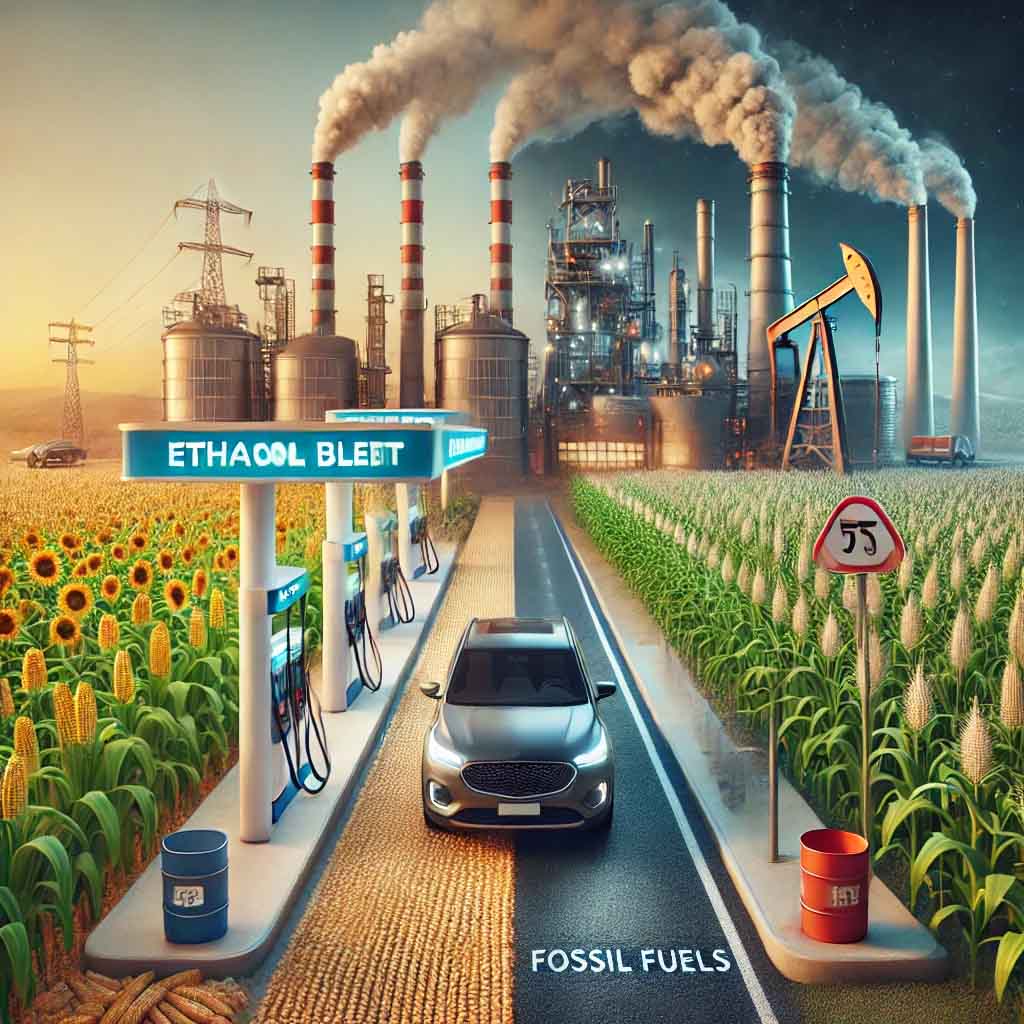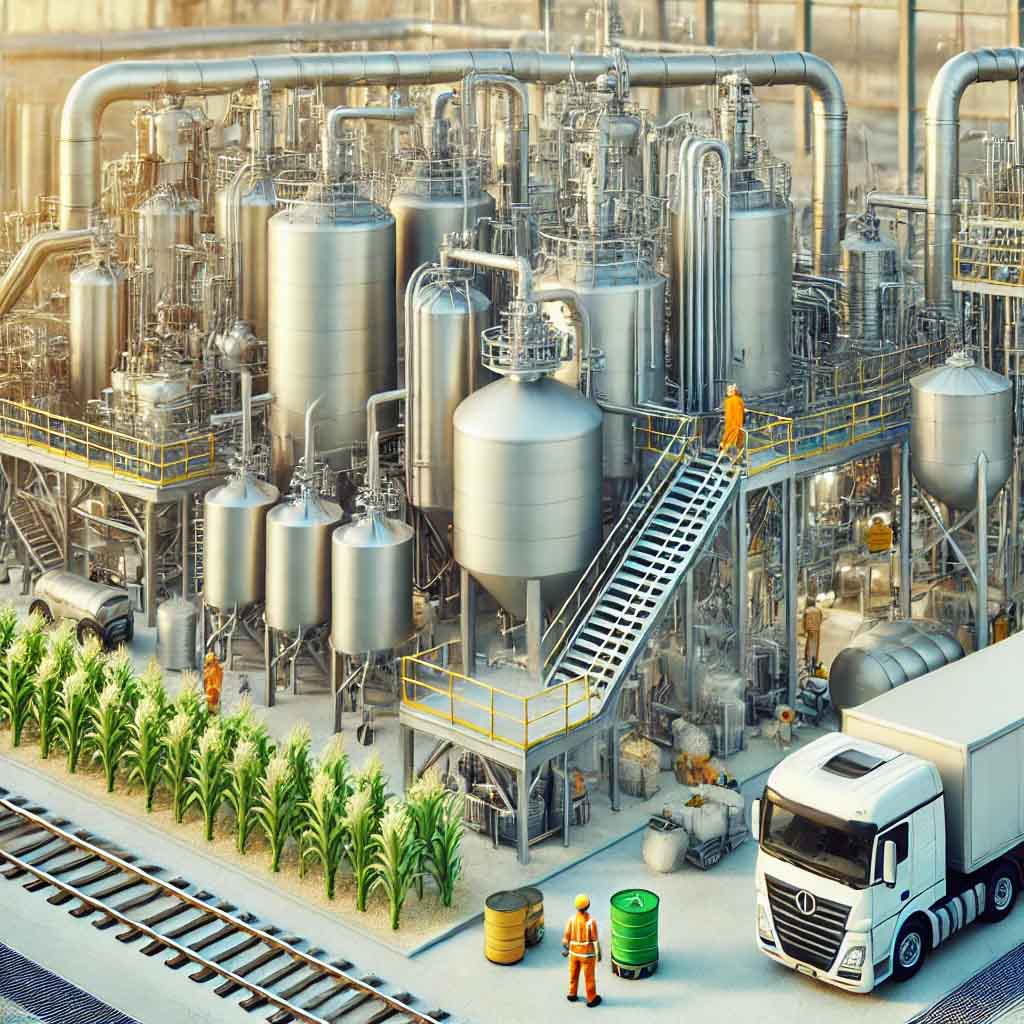Ethanol as an Alternative Fuel is gaining global attention as a cleaner and more sustainable energy source. Derived primarily from biomass, ethanol offers a renewable solution to reducing dependence on fossil fuels. It burns cleaner, producing fewer greenhouse gases and pollutants, making it an environmentally friendly choice. Many countries are investing in ethanol-blended fuels to enhance energy security and combat climate change. Additionally, advancements in ethanol production from non-food sources, such as agricultural waste, further increase its sustainability. In this article, we explore the benefits, challenges, and future potential of ethanol as an alternative fuel, providing insights into its role in shaping a greener transportation sector.
Click to use Silverigroup personal shopper services
Understanding Ethanol as an Alternative Fuel
Ethanol as an alternative fuel has gained attention due to its renewable nature and environmental benefits. Derived primarily from biomass sources such as corn, sugarcane, and cellulosic materials, ethanol is a biofuel that can be blended with gasoline or used in its pure form. It is commonly found in fuel mixtures like E10 (10% ethanol, 90% gasoline) and E85 (85% ethanol, 15% gasoline), offering a cleaner-burning option compared to traditional fossil fuels.
Click to buy citric acid from Silvairgroup
One of ethanol’s key advantages is its ability to reduce greenhouse gas emissions, helping to lower the carbon footprint of transportation. It also has a high octane rating, which can enhance engine performance and efficiency. However, ethanol contains less energy per gallon than gasoline, which may result in slightly lower fuel economy. Despite this, its biodegradability and reduced air pollutants make it a viable alternative in the shift toward sustainable energy solutions.

As technology advances, ethanol production methods are becoming more efficient, reducing reliance on food crops and expanding into cellulosic ethanol derived from agricultural waste. This makes ethanol a promising candidate for future energy needs, supporting global efforts to transition toward cleaner and more renewable fuel sources.
| Property | Details |
| Chemical Formula | C₂H₅OH |
| Source | Biomass (corn, sugarcane, cellulosic materials) |
| Energy Density | Lower than gasoline (about 66% of gasoline’s energy) |
| Emissions | Lower CO₂ and greenhouse gases than fossil fuels |
| Blending Use | Commonly mixed with gasoline (E10, E85) |
| Biodegradability | High (less harmful to the environment) |
| Octane Rating | High (improves engine performance) |
| Production Process | Fermentation & distillation |
| Environmental Impact | Reduces reliance on fossil fuels |
Ethanol vs. Fossil Fuels: A Cleaner and Renewable Alternative
Ethanol has emerged as a viable alternative to traditional fossil fuels, offering environmental and economic benefits. Unlike gasoline and diesel, which are derived from finite petroleum reserves, ethanol is a biofuel produced from renewable sources like corn, sugarcane, and agricultural waste. This key difference makes ethanol a more sustainable fuel option for the future.
Click to buy Beluga Fresh Frozen from Silverigroup
Key Comparisons Between Ethanol and Fossil Fuels:
- Renewability: Fossil fuels take millions of years to form, whereas ethanol can be produced annually from crops and biomass. This makes ethanol a replenishable energy source;
- Carbon Emissions: Ethanol burns cleaner than gasoline, producing lower levels of carbon monoxide and particulate matter. While it still releases CO₂, the plants used in its production absorb CO₂ during growth, creating a more balanced carbon cycle;
- Energy Content: Ethanol contains about 30% less energy per gallon than gasoline, which can lead to reduced fuel economy in standard engines. However, ethanol’s high octane rating improves combustion efficiency and engine performance;
- Environmental Impact: Extracting and refining fossil fuels leads to pollution, oil spills, and habitat destruction. In contrast, ethanol production has a lower ecological footprint, particularly when sourced from waste materials rather than food crops;
- Engine Compatibility: Ethanol can be blended with gasoline in different ratios (E10, E15, E85), allowing for flexible adoption without major engine modifications. Meanwhile, fossil fuels remain the standard for most vehicles today.
As the world shifts toward cleaner energy, ethanol provides a practical alternative to fossil fuels. Continued advancements in ethanol production, such as cellulosic ethanol, are expected to enhance its efficiency and sustainability, making it an increasingly important player in the transition to renewable energy.

Ethanol Production Process: From Biomass to Biofuel
Ethanol is a renewable biofuel derived from plant-based materials, commonly known as biomass. The production process involves several key stages, from raw material selection to the final purified ethanol product. Below is a step-by-step breakdown of the ethanol production process.
1. Biomass Selection and Preparation
Ethanol can be produced from various biomass sources, including:
- Sugar-based crops: Sugarcane, sugar beets;
- Starch-based crops: Corn, wheat;
- Cellulosic materials: Agricultural residues, wood, and grasses.
Once selected, the raw materials are cleaned and ground to increase surface area for enzymatic action.
2. Conversion of Biomass into Fermentable Sugars
Depending on the biomass type, different processes are used:
- For sugar-based crops: The sugars are readily available and can be directly fermented;
- For starch-based crops: Enzymes break down starch into simple sugars like glucose;
- For cellulosic materials: A more complex process involving pre-treatment and enzymatic hydrolysis is needed to release sugars.
3. Fermentation
Microorganisms, usually yeast, are introduced to convert sugars into ethanol and carbon dioxide. This stage typically lasts 24-72 hours in large fermentation tanks.
4. Distillation and Dehydration
After fermentation, the ethanol mixture contains water and other byproducts. Distillation is used to separate ethanol, and dehydration removes any remaining water to achieve the desired purity (usually 99% ethanol).
5. Final Processing and Blending
The purified ethanol is either used as a standalone fuel (E100) or blended with gasoline in various ratios (e.g., E10, E85). It is then transported for commercial use in vehicles and industrial applications. Ethanol production continues to evolve, with advancements in cellulosic ethanol and carbon-efficient technologies making it a more sustainable and viable fuel alternative.

Challenges in Widespread Ethanol Adoption
The adoption of ethanol as an alternative fuel faces several obstacles, despite its environmental benefits. Economic, technical, and logistical challenges must be addressed to enhance its viability as a mainstream fuel option.
- Infrastructure Limitations: Most fuel distribution systems are designed for gasoline and diesel. Ethanol is more corrosive and absorbs water easily, requiring specialized storage tanks, pipelines, and fuel dispensers. Retrofitting existing infrastructure or developing new ethanol-compatible systems demands significant investment;
- High Production Costs: Although ethanol is renewable, large-scale production remains expensive. Traditional methods rely heavily on crops like corn and sugarcane, while advanced processes such as cellulosic ethanol production require complex technologies that are still being optimized;
- Resource Competition: Ethanol production competes with food crops for land and water. Increased demand for corn-based ethanol, for example, can drive up food prices and strain agricultural resources, leading to concerns about food security;
- Lower Energy Density: Ethanol contains less energy per gallon than gasoline, meaning vehicles require more fuel to travel the same distance. This reduces fuel efficiency and makes ethanol less attractive for consumers accustomed to higher-mileage fossil fuels;
- Vehicle Compatibility Issues: Not all vehicles are designed to run on high ethanol blends like E85. Many older models may experience engine wear, reduced performance, or require costly modifications to operate efficiently with ethanol-based fuels;
- Market and Policy Uncertainty: Government incentives and mandates play a crucial role in ethanol’s adoption. Changes in policies, fluctuating subsidies, or shifts in fuel regulations can impact the industry’s growth and discourage long-term investments in ethanol production and infrastructure.
Addressing these challenges through improved technology, sustainable farming practices, and supportive policies will be crucial in making ethanol a more practical and widely accepted fuel alternative.
Alternative Fuels to Ethanol: Other Renewable Energy Sources
While ethanol is a widely used biofuel, several other renewable fuels offer viable alternatives for reducing dependence on fossil fuels. Biodiesel, derived from vegetable oils or animal fats, provides a cleaner-burning option, particularly for diesel engines. It reduces greenhouse gas emissions and can be used in existing diesel infrastructure with minimal modifications. Another alternative is biogas, produced through the anaerobic digestion of organic waste. This methane-rich gas can be used for electricity generation or as a direct fuel for vehicles, offering a sustainable way to utilize waste materials.
Hydrogen is also gaining attention as a potential fuel source, especially for fuel cell vehicles. It produces only water as a byproduct and offers high energy efficiency, though its storage and transportation remain challenging. Additionally, synthetic fuels, often derived from captured carbon and hydrogen, mimic conventional gasoline or diesel but with a lower carbon footprint. Electricity from renewable sources such as solar and wind is another major contender, with battery technology improving rapidly to support electric vehicles as a mainstream solution. Each of these alternatives presents unique advantages and challenges, contributing to a diverse and evolving energy landscape.
Will Ethanol Replace Gasoline?
Ethanol is unlikely to fully replace gasoline in the foreseeable future due to several factors. While it is a renewable fuel and offers environmental benefits by reducing carbon emissions, ethanol has lower energy content than gasoline, meaning more fuel is required for the same distance. Additionally, the infrastructure for ethanol distribution and vehicle compatibility is still limited compared to gasoline. However, ethanol can play a significant role in reducing reliance on fossil fuels as a blending agent in gasoline and as an alternative fuel for certain applications, especially with advancements in biofuel production.
Conclusion
In conclusion, ethanol presents a promising alternative fuel that can contribute significantly to reducing greenhouse gas emissions and reliance on fossil fuels. While challenges such as energy content and infrastructure remain, the benefits of ethanol as a renewable and sustainable fuel source are undeniable. Ongoing research and technological advancements could further enhance its efficiency and production methods, making ethanol a more viable solution for a greener energy future. However, its role will likely be in complementing, rather than fully replacing, gasoline in the near term, offering a transition path toward more sustainable energy sources.

